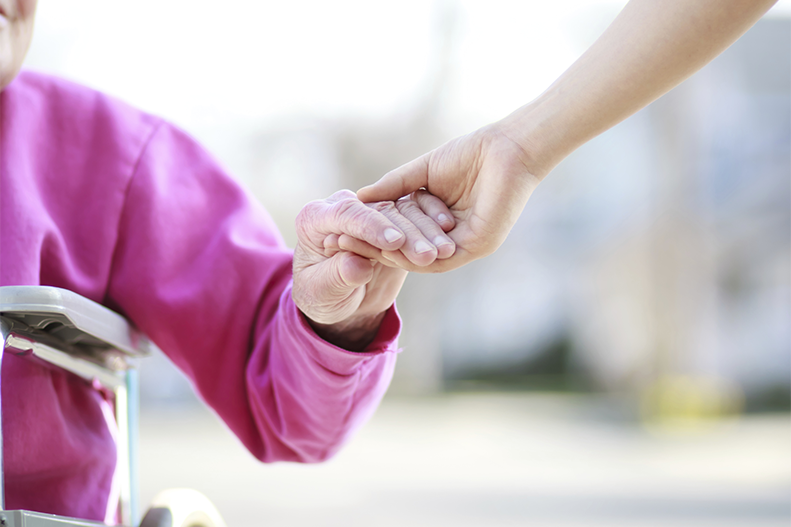Lymphedema is the fluid buildup in soft tissue, causing swelling in the limbs, usually in the arms/legs or breast. It is one of the most common complications patients face after breast cancer treatment. Risk of lymphedema increases for patients who had radiation treatment after surgery. Not only is the condition uncomfortable and makes the patient’s arm feel heavy, it can impact doing normal everyday activities, cause infection, and even make it difficult to wear sleeves on the arm affected by lymphedema.
Why Is Lymphedema Common in Patients with Breast Cancer?
The cancer itself, treatment, or infection can block lymph nodes or vessels in the lymphatic system, which can lead to swelling.
When treatment removes or damages lymph nodes or vessels, fluid builds up in surrounding tissue causing swelling. Because breast cancer surgery usually involves the removal of one or more lymph nodes, lymphedema is a common complication of treatment. Radiation therapy can also cause damage to lymphatic vessels. The more lymph nodes and vessels removed, the higher the risk of developing lymphedema.
How Can I Tell if I’m Getting Lymphedema?
There is no cure for lymphedema, but detecting it early will help you and your doctor develop a plan to manage the side effects.
Symptoms of lymphedema include:
- Swelling in the arm or breast
- A heavy feeling in the arms/breast
- Shiny, warm, or red skin
- Hardened or thicker skin
- Pain or discomfort
- Small warts or blisters that leak clear fluid
The condition is not always an immediate complication of treatment. It can take months or years to develop, so always talk to your doctor at follow up about any possible signs of lymphedema.
What Can I Do About It?
You may not be able to prevent lymphedema, but if you’re at high risk based on treatment, taking steps to lower your risk will also help manage the side effects of lymphedema.
For example, maintaining a healthy weight and wearing loose fitting clothing and accessories can help keep fluid flowing properly and reduce the risk of fluid buildup.
Today’s technology can diagnose lymphedema although there is no clinical symptom. Monitoring patients after breast cancer treatment is the key element of diagnosis lymphedema early and lowering the risk of clinical lymphedema (obvious swelling) and infection.
Managing Lymphedema
Ways to help relieve lymphedema side effects include:
- Exercise regularly. A therapist can show you exercises to improve flexibility and range of motion.
- Undergo manual lymphatic drainage, a technique performed by a therapist to help blocked fluid drain properly.
- Use prescribed compression garments, designed to keep proper fluid motion.
- Maintain excellent hygiene and skin care. Lymphedema raises your risk for infection from cuts or injury.
- Keep the swollen limb elevated.
Your doctor may also prescribe a compression pump, laser treatments, medications to help with pain, or antibiotics to prevent infection.
Lymphedema is a long-term complication of treatment, but your doctor can help you develop a plan to manage your risk of lymphedema as well as side effects. The earlier it is detected, the more your doctor can do to help you manage lymphedema.
If you or a loved one are undergoing treatment for cancer, you may have a lot of questions. To learn more about the latest in cancer treatments, visit UPMC Hillman Cancer Center online.
